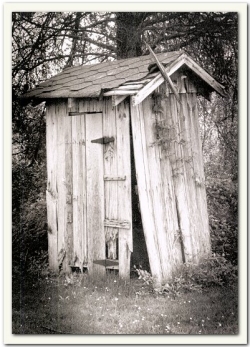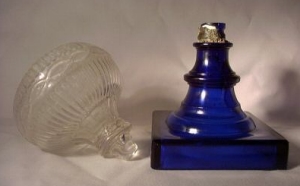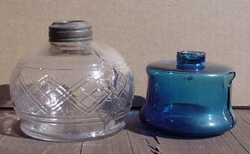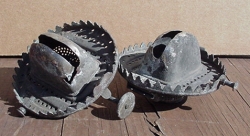By now, many of you are probably wondering what a dissertation on outhouses is doing on this lighting web site. Well, it's this - a common item recovered by bottle diggers from privy digs are the remains of oil lamps. That's right, lamps in the outhouse pit. It turns out that privy pits are a potential bonanza for diggers. Bottles, jars and other artifacts are common,
The two TRIUMPH lamp burners shown here were found buried in a trash pit in an early 1800's farmhouse in southwestern Pennsylvania. The foundation of the house was stacked stone (no mortar) and was deteriorating. The owner unearthed the indoor trash pit when he was excavating around the foundation to make repairs. The pit was three to four feet in diameter and nearly six feet deep.
Digging around old outhouses and privy pits is not the ideal Saturday or Sunday afternoon for everyone. To coin an old phrase, "Is a dirty job, but somebody has to do it!" As long as there are bottle diggers and unexcavated outhouse sites, I'm certain that more old lamps will once again see the light of day.
End Notes & References
|
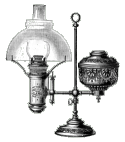
| Reference Desk | Lamp Information | Other Resources | On-Line Shopping |

Purveyors of Antique Lighting and Accessories
435 Main Street
 Hurleyville, New York 12747
Hurleyville, New York 12747
|
--------------------------
outĚhouse - n. 1. A small, enclosed structure having one or two holes in a seat built over a pit and serving as an outdoor toilet. 2. An outbuilding, as on a farm. -------------------------- privĚy - n. 1. A necessary house or place; a backhouse. -------------------------- |

Remains of a privy-
dug prong burner by
Manhattan Brass Co.?
dug prong burner by
Manhattan Brass Co.?
privy-dug kerosene lamps

The Outhouse Connection
^ Top of Page
Privacy Policy | Terms and Conditions of Use | Announcements
Copyright © 2001-2011 ~ Daniel Edminster | The Lampworks ~ All Rights Reserved
